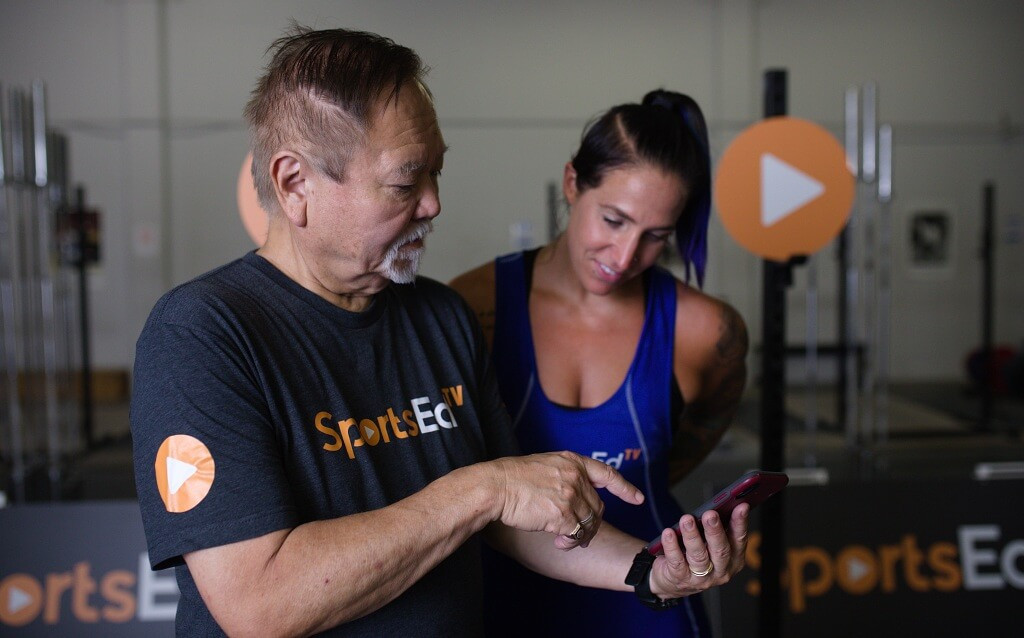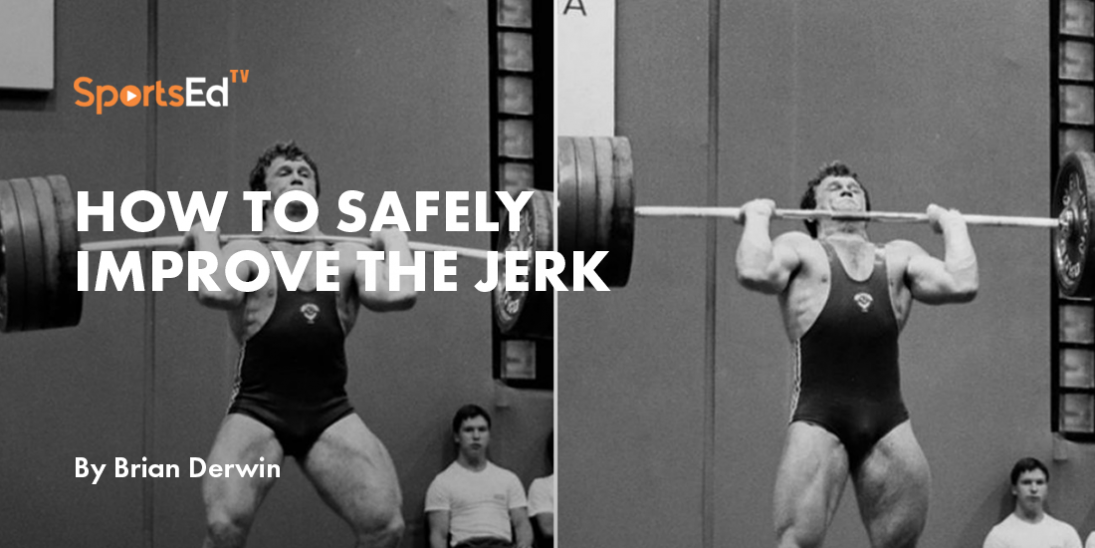Weightlifting
Welcome and thanks for visiting...

Weightlifting for Youth: A Scientific Overview

For many years a popular topic of concern for parents, coaches, and athletes has been the safety and efficacy of resistance training, and in particular, the sport of weightlifting, for children and adolescents. Despite many years of solid scientific work that has investigated this topic and determined that such training is safe and effective, many myths remain.
SportsEdTV Senior Contributors Kyle Pierce, EdD; W. Guy Hornsby, PhD; and Michael H. Stone, PhD recently authored an excellent paper entitled “Weightlifting for Children and Adolescents: A Narrative Review.” This paper is scheduled to appear in the current issue of Sports Health, Volume 14, Number 1, pp. 45-56, January 2022. Below is a brief summary of the paper.
Weightlifting for kids
Competitive weightlifting, at least in the United States, currently has no minimum age for organized youth competition. In terms of age-restricted competition, in recent years we have seen the inclusion of the sport at the Youth World Championships (13-17) and at the Youth Olympics (16-17). It appears that the question of youth weightlifting has mostly been settled. Certainly, there have been many scientific studies, position papers, etc. that assure children and their parents, that in the proper environment, neither the competitive sport nor general resistance training presents a danger for youth participants.
One of the most frequent concerns about youth weightlifting some years ago was the assumption that a young athlete’s epiphyseal growth plates would no longer grow, and the youngster’s growth potential would be stunted. In fact, resistance training has been found to stimulate, not retard, physical growth.
Noting the tremendous strain often evident in mature weightlifters, some have questioned the wisdom of exposing youngsters to such an intense sport. Others have questioned the wisdom of youngsters engaging in an “explosive,” or ballistic sport such as weightlifting.
It has repeatedly been shown that under proper conditions, young weightlifters are unlikely to incur an injury “requiring medical attention or loss of training time.” As pointed out by the authors, injuries that do occur are likely related to avoidable accidents. Numerous studies have repeatedly shown that young lifters’ injury rate is well below that of similar ages engaged in more popular sports.
What is the Right Age to Begin Weightlifting Training?
The authors stress that as with any sport, a child must be both physically and psychologically prepared to learn new skills. One must be realistic in terms of expectation, especially in light of the fact that weightlifting normally takes multiple years of training and competition before optimal results are available.
It is also crucial that the child display age-appropriate maturity in order to take in the various nuances of a long-range activity such as resistance training. It is noted that chronological age is not a particularly accurate measure of one’s maturity to engage in weightlifting. With proper maturity in evidence, “formal weightlifting training can be as young as 10 or 11.” The authors point out that in Bulgaria, at least from 1983 through 1993, a younger starting age was implemented, allowing for 10- to 11-year old’s to be selected for national programs.
Of course, the commencement of weightlifting training at this age should be part of an overall program of athletic development. A potential weightlifter is exposed to many other sports, games, and activities in an attempt to develop an entire athlete. The authors emphasize that “specialization often occurs too early and, too often, with well-meaning coaches and parents hurrying the developmental process in many sports, including weightlifting.”
How to coach weightlifting?
A well-rounded exposure to many sports that provide a high level of fun (the reason most youths become involved in organized sports), and a lack of sport specialization is needed for young athletes. Weightlifting specialization is appropriate at a later stage in life, customarily in the mid-teen years.
The authors do an excellent job emphasizing that proper coaching and/or supervision is a must. Of course, it can be difficult to easily determine the criteria for meeting this standard. At the very least, a coach should have successfully completed a course of instruction leading to some sort of nationally recognized coaching certification.
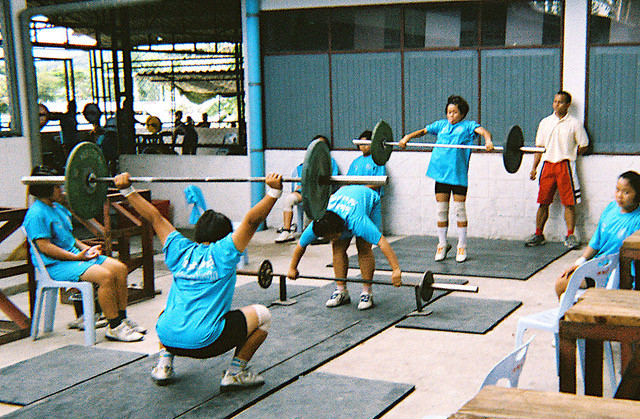
Kyle Pierce Photo
Teaching safe and proper techniques in weightlifting
This should be the initial goal of weightlifting training. Although training of youngsters should initially include only light loads, and therefore failed attempts are unlikely, the young lifter must be instructed in the proper way in which to miss (drop) a failed attempt.
Age-appropriate training
Another must is age-appropriate training, moving from general resistance training for total body development to later exposure and possible specialization in the sport’s competitive movements. Properly developed training programs must be scaled to an age-appropriate level. The early emphasis should be on perfecting the technical skills necessary to snatch and clean-and-jerk safely and effectively. This requires low-intensity loads repeated generally in sets of fewer than five repetitions. Other more general exercises, such as squatting or pulling, may include heavier loads, higher repetitions, or a combination of both.
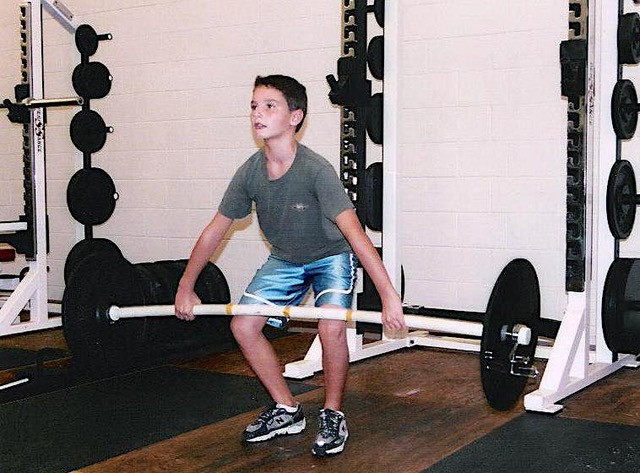
Newton Photo
Proper discipline
is a key to successful youth weightlifting training. This includes respect for others and equipment, avoidance of maximum lifts until skills and progress suggest steps in this direction, proper clothing and shoe selections, care of the hands, and numerous other topics.
The ultimate goal for those choosing to eventually specialize in weightlifting is competition. Competition for youngsters is initially limited to similar age, maturity, and talent levels. Learning how to compete at this stage is more important than the final results.
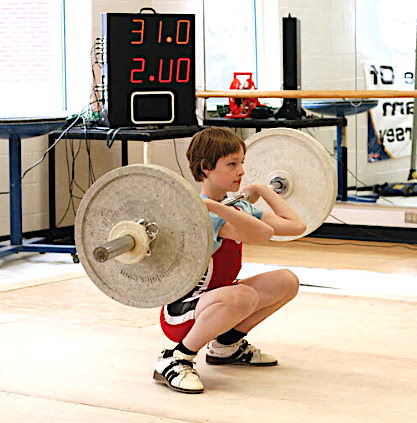
Bruce Klemens Photography
The authors present an extensive review of some differences between training male and female children and adolescents. Consideration must be given relative to “differences in maximum strength, particularly in upper body strength, electromechanical delay, skeletal muscle contraction time, and menstrual cycle characteristics.”
So, while training youth for competitive weightlifting has become more widely accepted throughout most of the world, only by approaching this topic sanely and “following the science” can we expect to safely and effectively achieve optimal success. Drs. Pierce, Hornsby, and Stone have provided an excellent roadmap to the proper training of young and adolescent children for the sport of weightlifting.
Other SportsEdTV blogs have provided additional insights into the topic of youth training. Check here:
The Key to Weightlifting Success: Start Them Young! But, How?
Youth Weightlifting: What Is Its Future Direction?
Readers are encouraged to read the full article in order to note the many details offered within.

